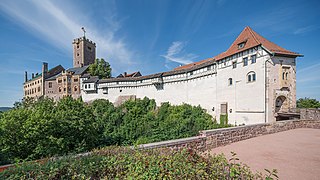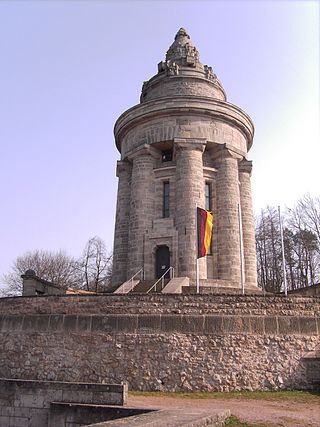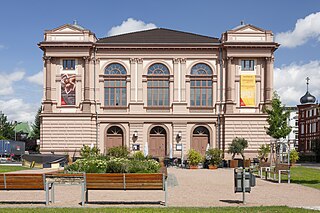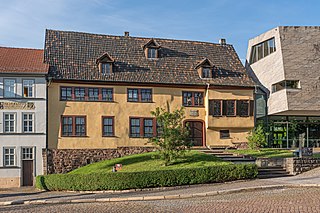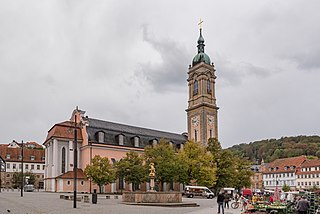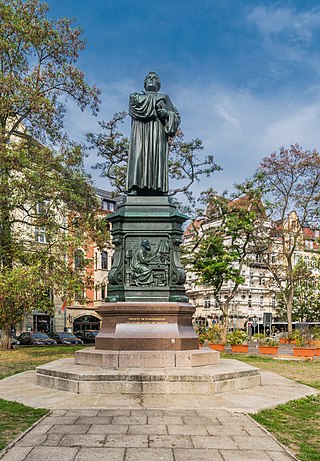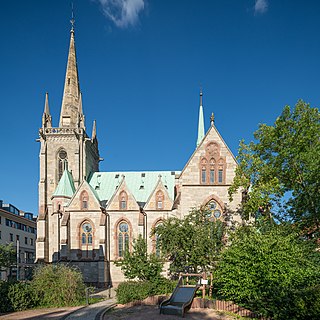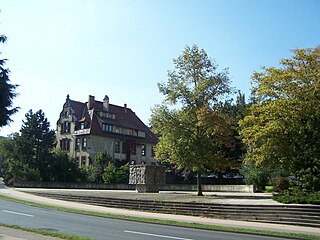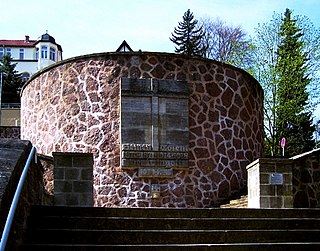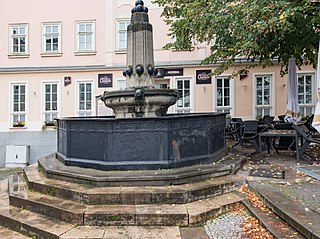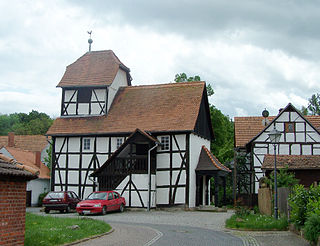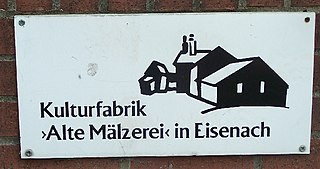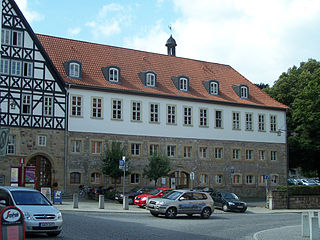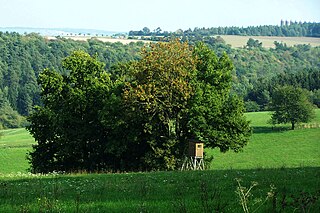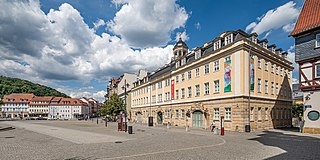20 Sights in Eisenach, Germany (with Map and Images)
Legend
Welcome to your journey through the most beautiful sights in Eisenach, Germany! Whether you want to discover the city's historical treasures or experience its modern highlights, you'll find everything your heart desires here. Be inspired by our selection and plan your unforgettable adventure in Eisenach. Dive into the diversity of this fascinating city and discover everything it has to offer.
Sightseeing Tours in Eisenach1. Wartburg
The Wartburg is a castle originally built in the Middle Ages. It is situated on a precipice of 410 metres (1,350 ft) to the southwest of and overlooking the town of Eisenach, in the state of Thuringia, Germany. It was the home of St. Elisabeth of Hungary, the place where Martin Luther translated the New Testament of the Bible into German, the site of the Wartburg festival of 1817 and the supposed setting for the possibly legendary Sängerkrieg. It was an important inspiration for Ludwig II when he decided to build Neuschwanstein Castle.
2. Burschenschaftsdenkmal
The Burschenschaft Monument in the south of Eisenach on the Göpelskop is the war memorial for the 87 Burschenschaft members who died in the Franco-German War of 1870/71. It was erected in 1902 at the same time as a national monument of the German Burschenschaft to commemorate the founding of the German Reich.
3. Landestheater Eisenach
The Landestheater Eisenach is a theater in the Thuringian city of Eisenach. It has the ballet and young drama sections. Transferred to the Meiningen-Eisenach Cultural Foundation with effect from 1 January 2009 and since then partly used by the Meiningen State Theatre, it offers opera, operetta, musicals, ballet/dance theatre, drama, youth and children's theatre, puppet theatre and concerts in its repertoire. The Landestheater Eisenach cooperates with the Thuringia Philharmonic Orchestra Gotha-Eisenach and the Theater Rudolstadt, among others.
4. Bachhaus Eisenach
The Bach House in Eisenach, Thuringia, Germany, is a museum dedicated to the composer Johann Sebastian Bach who was born in the city. On its 600 m2 it displays around 250 original exhibits, among them a Bach music autograph. The core of the building complex is a half-timbered house, ca. 550 years old, which was mistakenly identified as Bach's birth house in the middle of the 19th century. In 1905, the Leipzig-based Neue Bachgesellschaft acquired the building. In 1907, it was opened as the first Bach museum.
5. Georgenkirche
The Georgenkirche is the city and main church of Eisenach, centrally located in the southern area of the market. Martin Luther preached here during the Reformation, making it one of the oldest Protestant places of worship. Johann Sebastian Bach was baptized in it. It served as a court church for a time and was the episcopal church of the Evangelical Lutheran Church of Thuringia until the merger of the Protestant church provinces of Saxony and Thuringia to form the Evangelical Church in Central Germany on 1 January 2009.
6. Lutherdenkmal
The Luther monument in Eisenach on Karlsplatz was inaugurated in 1895. The monument honours the reformer Martin Luther, who stayed at Wartburg Castle near Eisenach from 1521 to 1522. It was created by the sculptor Adolf von Donndorf.
7. St. Elisabeth
The Roman Catholic parish church of St. Elisabeth is located in Eisenach in the Thuringian Wartburgkreis. It is the parish church of the parish of St. Elisabeth Eisenach in the deanery of Meiningen in the Diocese of Erfurt. It bears the patronage of St. Elisabeth of Thuringia.
8. Ärztedenkmal
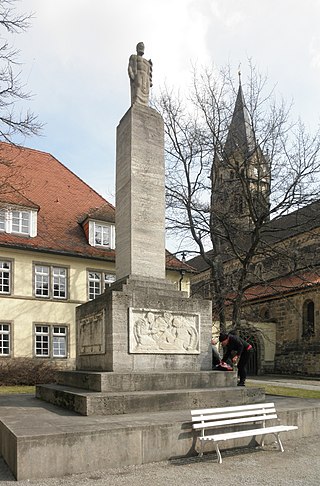
The Doctors' Monument in Eisenach was erected in 1926 in memory of the German doctors who died in the First World War. In 1997, it was reconstructed on the occasion of the 100th German Medical Congress in Eisenach and is now dedicated by the German Medical Association "to all doctors who were victims of war, terror and tyranny in the exercise of their profession".
9. Villa Pflugensberg
The Villa auf dem Pflugensberg is a listed villa in the centre of the town of Eisenach in Thuringia. Until 2008, it was the seat of the regional church office of the Evangelical Lutheran Church in Thuringia.
10. Denkmal zur Geschichte der Deutschen Arbeiterbewegung
The monument to the history of the German workers' movement at the Eisenach Party Congress Memorial 1869 – also known under the propagandistic working title Party – Power of the Class – is a monument in the city of Eisenach.
11. Wingolfsdenkmal
The Wingolf Monument, located on the Pfarrberg in the centre of Eisenach, is the central place of remembrance for the fallen of the Wingolfsbund, the oldest umbrella organisation of Christian student fraternities. Originally built to commemorate the fallen brothers in the Franco-German War of 1870/71, it now also commemorates the victims of the two world wars. In 2003, the monument, including the staircase, was extensively renovated.
12. Schwarzer Brunnen
The Black Fountain in the Wartburg town of Eisenach is a running fountain built in 1817 and a monument to the city's history. It commemorates the gunpowder explosion that took place here on the evening of September 1, 1810.
13. Fachwerkkirche
The Protestant half-timbered church in Wartha is a listed branch church in the Wartha district of the city of Eisenach in Thuringia. It is the oldest and, with a floor area of 10 by 5.8 metres, also the smallest half-timbered church in Thuringia.
14. Alte Mälzerei
The Alte Mälzerei is a Wilhelminian building complex consisting of residential and malthouse buildings, an annex used as a coffee roastery, as well as warehouses and outbuildings in Eisenach in Thuringia. The largely completely preserved technical facility from the company's founding period is remarkable. The industrial monument has been owned by the Lippmann+Rau Foundation for Music Research and Art since 2016.
15. St. Georg-Brunnen
The Georgsbrunnen – also known as the "Gülden-Manns-Brunnen" – is a running fountain built in 1549 in the Wartburg town of Eisenach in Thuringia and a monument to the city's history. It commemorates the city's patron saint Saint George and was also a symbol of the city's market jurisdiction in the late Middle Ages.
16. Rudolfstein
Rudolfstein Castle is a ruined spur castle at 325 m above sea level, named after Rudolf III Schenk von Vargula, one of the most respected Thuringian knights and court officials (cupbearer) of the Thuringian landgraves. The castle is a ground monument in the southern city of Eisenach; it is located on a prominent rocky outcrop about 1500 m southeast of the Wartburg above the so-called "Milchkammer".
17. Automobile Welt Eisenach

Automobile Welt Eisenach is a car museum located in the old East German town of Eisenach adjacent to the banks of the Hörsel river. It is situated on the old Automobilwerk Eisenach factory site, one of the world's oldest, and opened as a museum in 2005 utilising building O2 from 1935.
18. Alte Residenz
Das Residenzschloss war ein Bauwerk in der Altstadt von Eisenach, das im 18. Jahrhundert zu weiten Teilen abgebrochen wurde. Die erhaltenen Teile sind heute als Alte Residenz und Residenzhaus bekannt und stehen unter Denkmalschutz. Das Schloss befand sich am Südrand des Eisenacher Marktes, unmittelbar südlich der Georgenkirche.
19. Mihlaer Berg
The Mihlaer Berg is a mountain in the Wartburgkreis district of Thuringia, Germany. The Mihlaer Berg is located about five kilometres west of the Hainich. On the mountain, the villages of Ütteroda, Bischofroda, Mihla and Neukirchen have different areas of land. The flat summit is located at 366.9 m above sea level.
20. Stadtschloss Eisenach
The Eisenach City Palace is a castle on the north side of the market square of the city of Eisenach in Thuringia. It was the residence of the Dukes of Saxe-Eisenach and later a residence of the Grand Dukes of Saxe-Weimar-Eisenach. Today, it houses offices of the city administration (cultural office), the Eisenach city archive and, since 1931, the Thuringian Museum.
Share
Disclaimer Please be aware of your surroundings and do not enter private property. We are not liable for any damages that occur during the tours.
